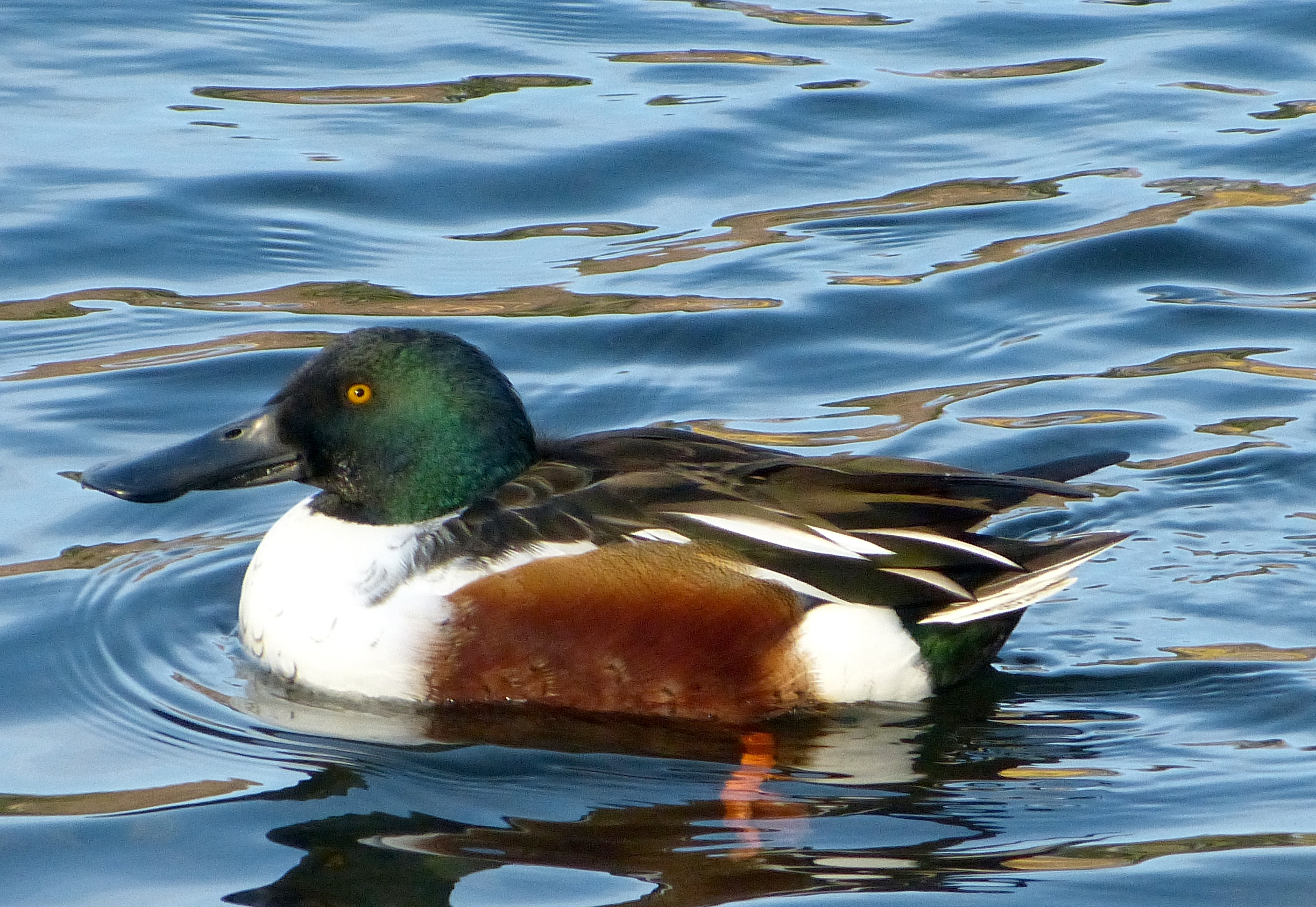Rare Birds & Odd Ducks at Jamaica Pond
In my first Jamaica Pond Ducks post I covered the more common waterfowl likely to be seen on Jamaica Pond. Here I will discuss less common ducks and other birds attracted to the Pond, especially in the fall and winter.
When we think of loons, we imagine being on a tranquil lake in upper New England and listening to their melancholy call:
Sound recording courtesy of LangElliott NatureSound Studio
That is indeed where many nest, but for the rest of the year they move about on both salt water and fresh. This Common Loon, wearing its winter plumage rather than the classic summer tuxedo, hung out on Jamaica Pond for at least six weeks this winter. As the Pond began to ice up in early January, it departed:
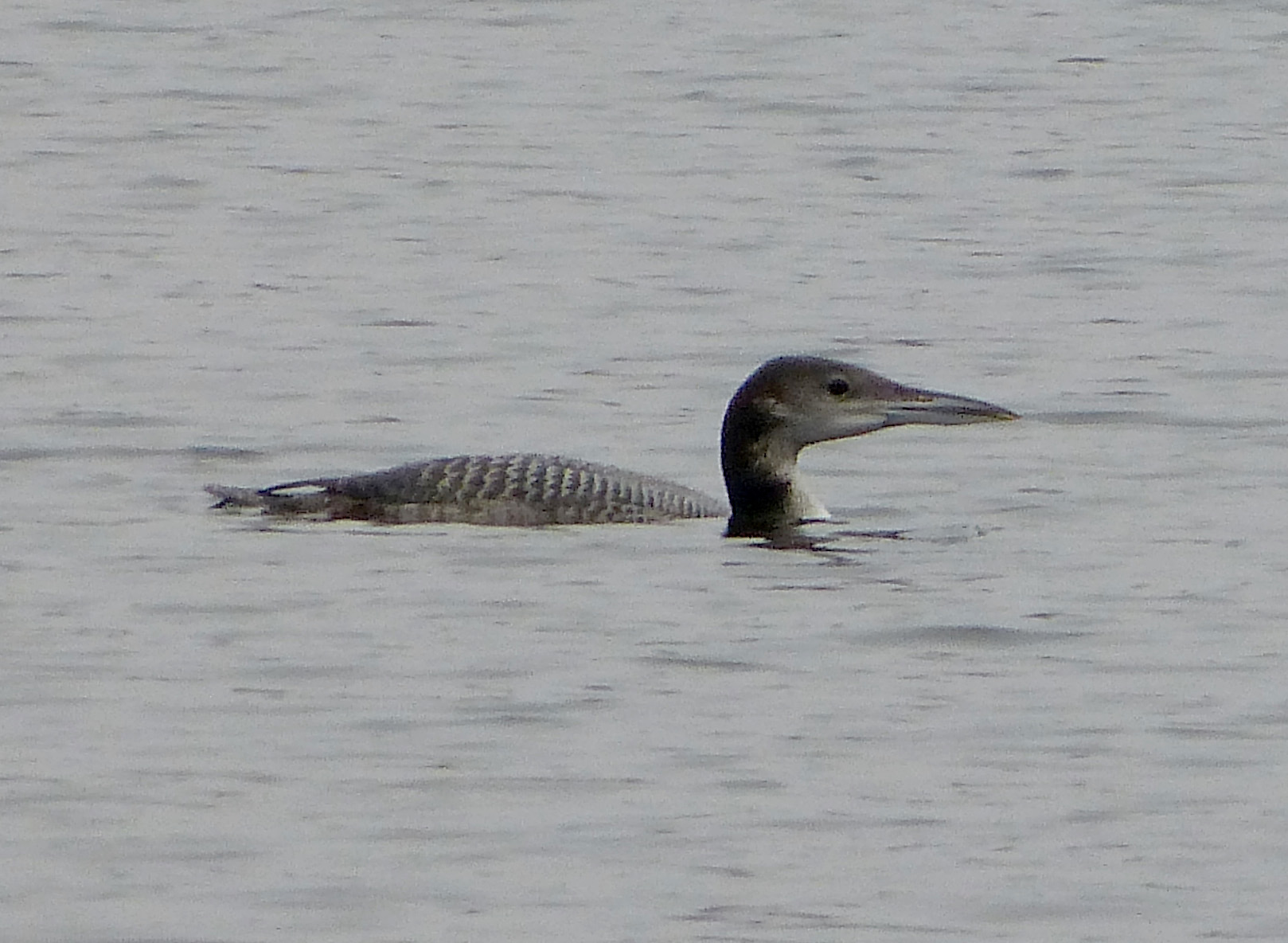
Common Loon in winter plumage. The long bill, size and low carriage are diagnostic. Photo: Bob Mayer
Just recently, another member of the loon family appeared on the Pond—an immature Red-throated Loon. It never got close enough to the shore to allow for a photo op.
There have been a number of “vagrant” ducks seen on the Pond over the last decade. This winter we had several spectacular ones:
Northern Shoveler, male. This was one of three on the pond in late November 2012. Photo: Bob Mayer
Northern Shovelers are well named for their very wide bill, built for scooping along the water’s surface to pick up small invertebrates or bits of vegetation. In 2002, one of them ran afoul of urban bad habits in the Muddy River’s North Basin behind the Museum of Fine Arts in the Fenway, probably because of that feeding pattern:
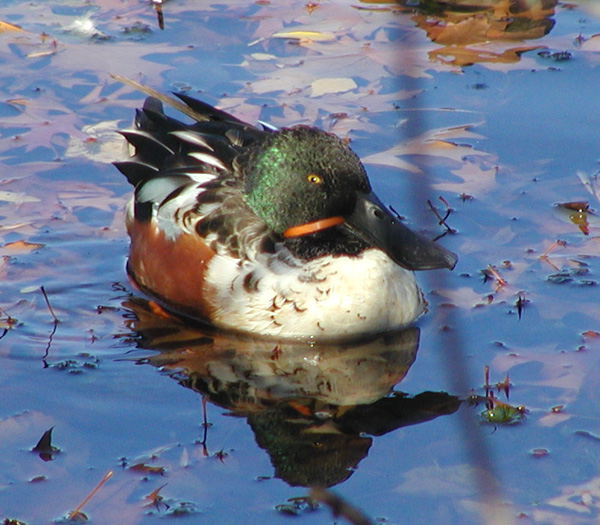
Snared Northern Shoveler in the Muddy River behind the MFA in 2002. Photo: Bob Mayer
This poor duck managed to get a Gatorade cap ring in its bill and up over its head, and couldn’t get it off. My friend Andrew Joslin and I—equipped with waders and nets—tried several times to capture and free the duck, but it wouldn’t let us get close enough. The Animal Rescue League attempted to net it from a canoe and also failed. After being in the area for more than a week it disappeared. We presumed it died, since the plastic “bit” didn’t allow it to fly more than short distances. The event is a poignant reminder to dispose of your trash properly.
The avian genus_ Aythya _is represented by six species in Massachusetts and five of them have been recorded on the Pond. The most commonly seen is the Ring-necked Duck:
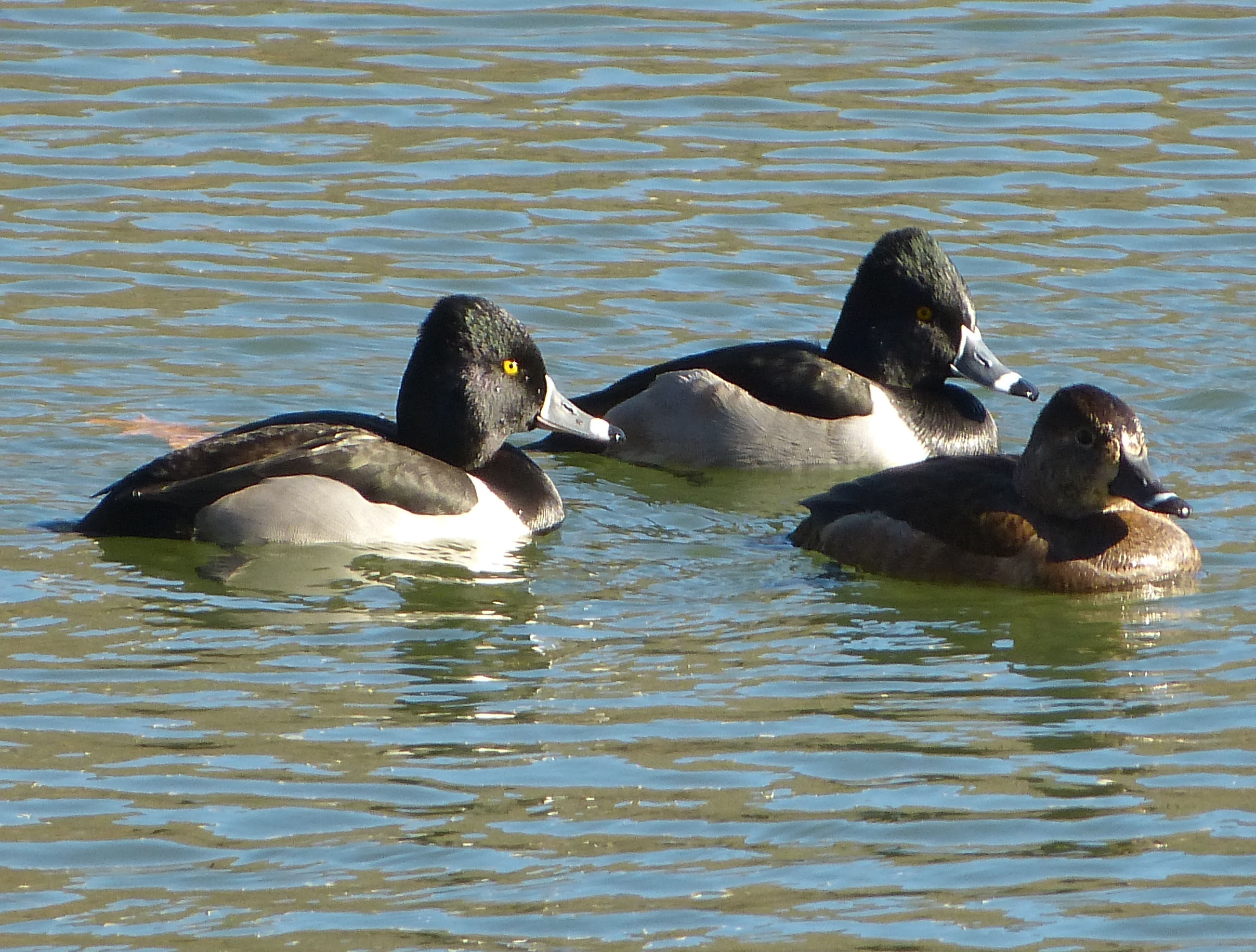
Ring-necked Ducks, two males and a female on the right. Photo: Bob Mayer
These handsome ducks should have been called “ring-billed” due to the white ring around their bill. The bill marking is far more distinctive than the chestnut neck ring, found on males and seen only at close range. One or more Ring-necks have been seen every year recently on the Pond. On the other hand, the Canvasback—the largest of the _Aythya g_roup—was documented only once before in this century until two males arrived in January, departing less than 48 hours later.
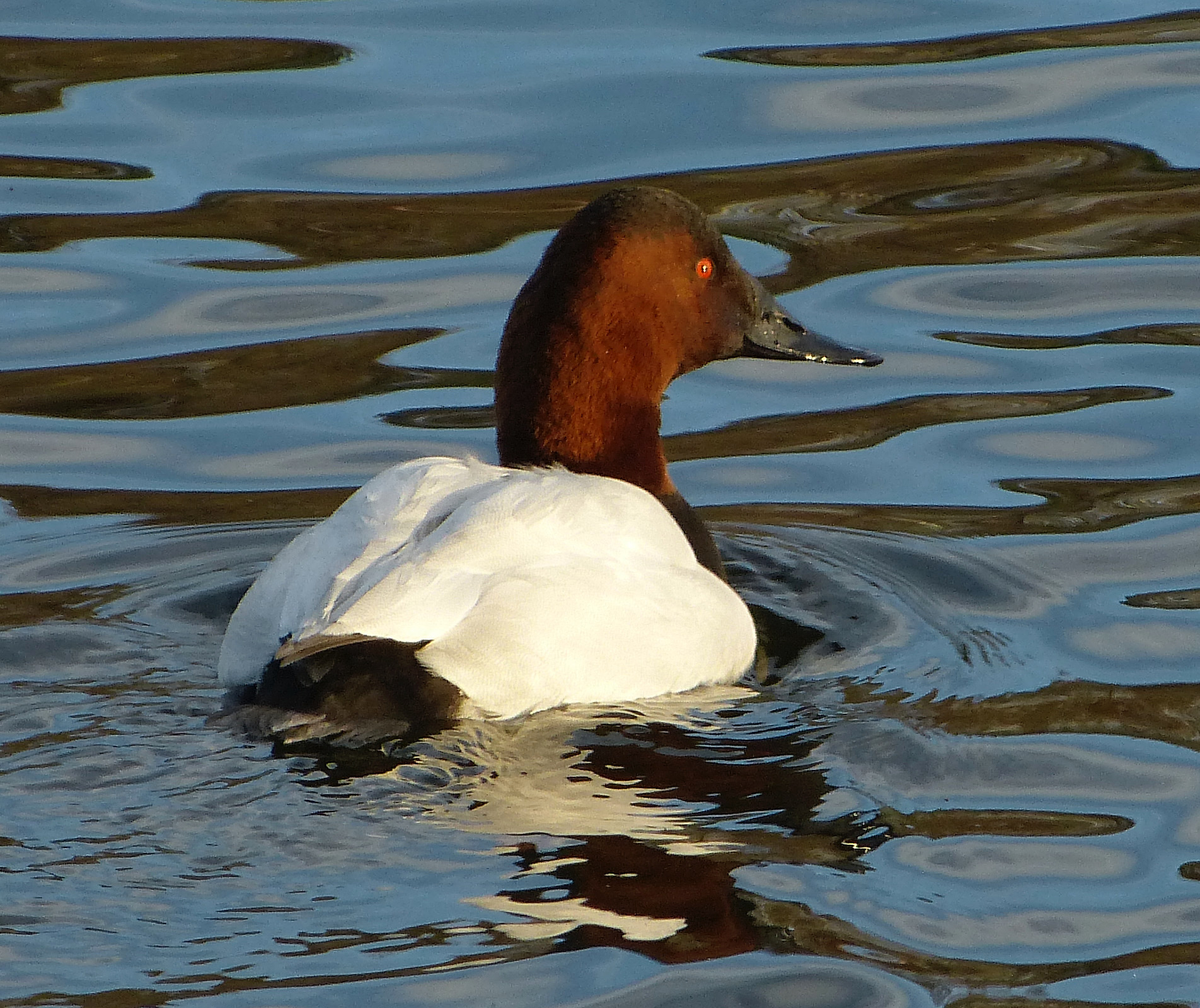
Canvasback, male. This image captures the beauty of the duck when it made a brief appearance on the Pond on January 14, 2013. Photo: Bob Mayer
As in many duck genera, Aythya females are much less intensely patterned than the males, which makes them harder to identify.
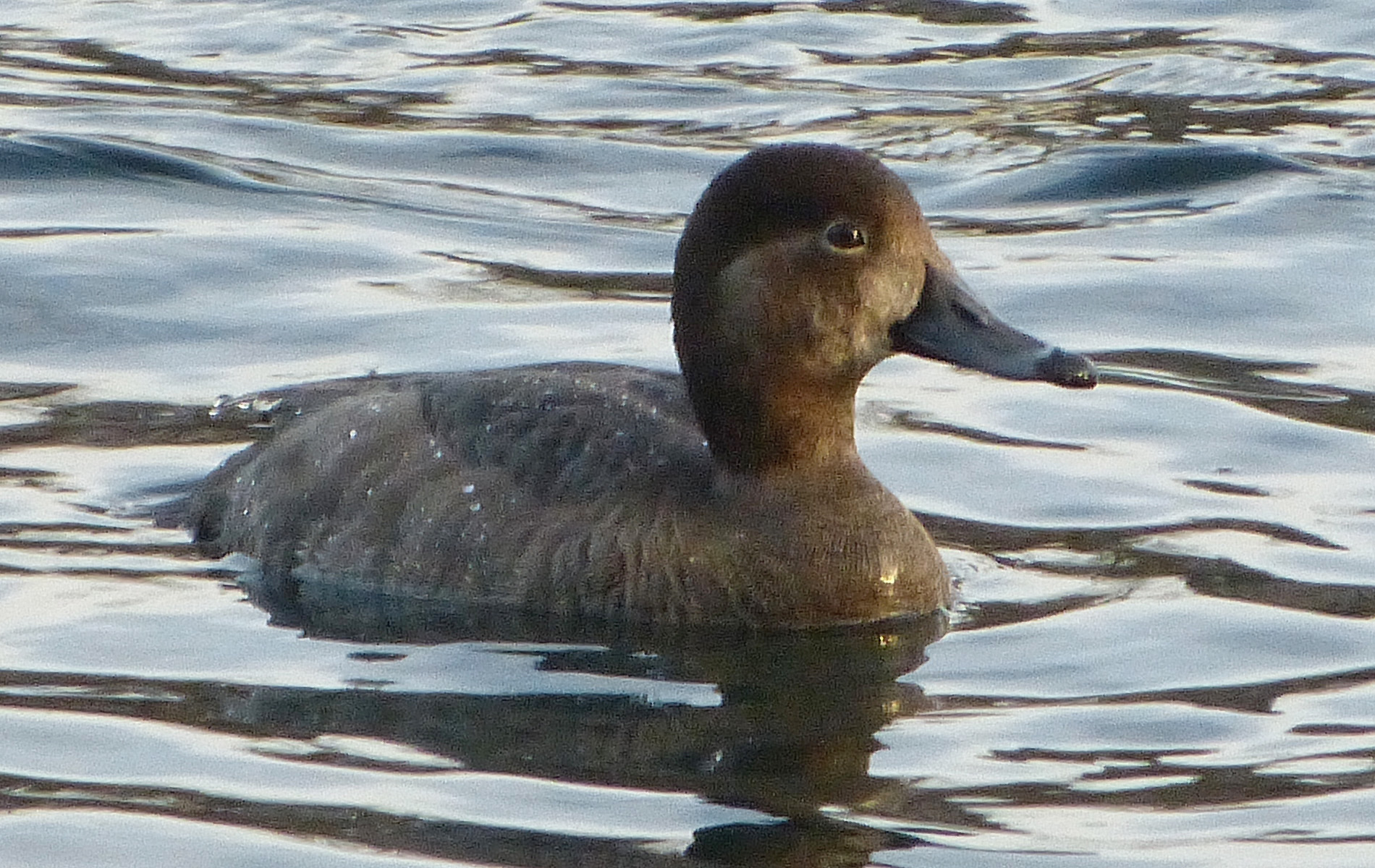
Redhead Aythyra americana, female. The male of this species has a distinct red head (not unlike the Canvasback pictured above). Aythyra females can be easily confused with one another. Photo: Bob Mayer
The last of the Aythyra genus which appear on the Pond occasionally in winter are the Scaups, Greater and Lesser, the latter more commonly.
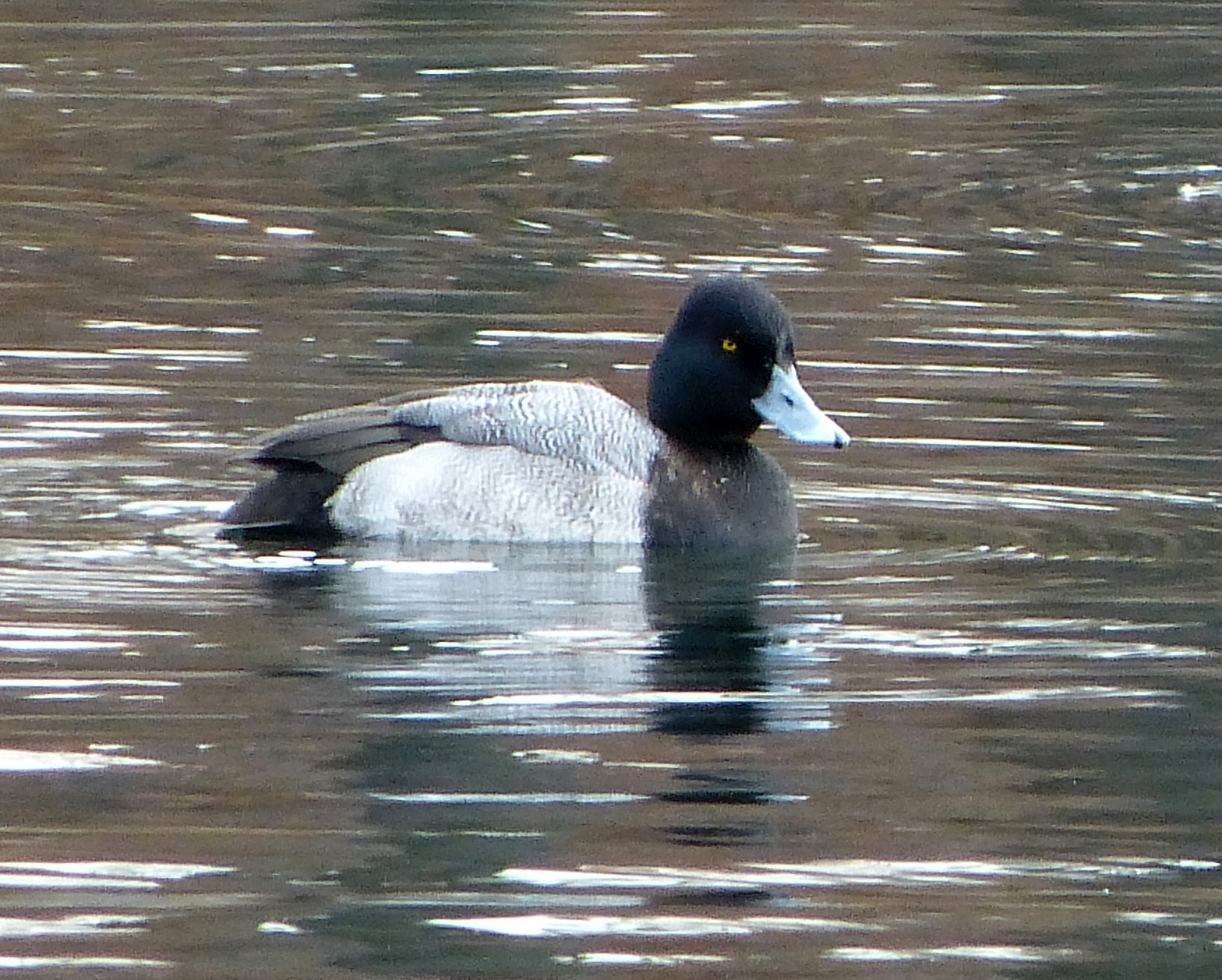
Lesser Scaup, male. Photo: Bob Mayer
A small diving duck that occasionally visits the Pond is the Bufflehead. They are never numerous on the Pond—usually appearing singly or as a pair— whereas in salt water settings there may a sizable raft of them.
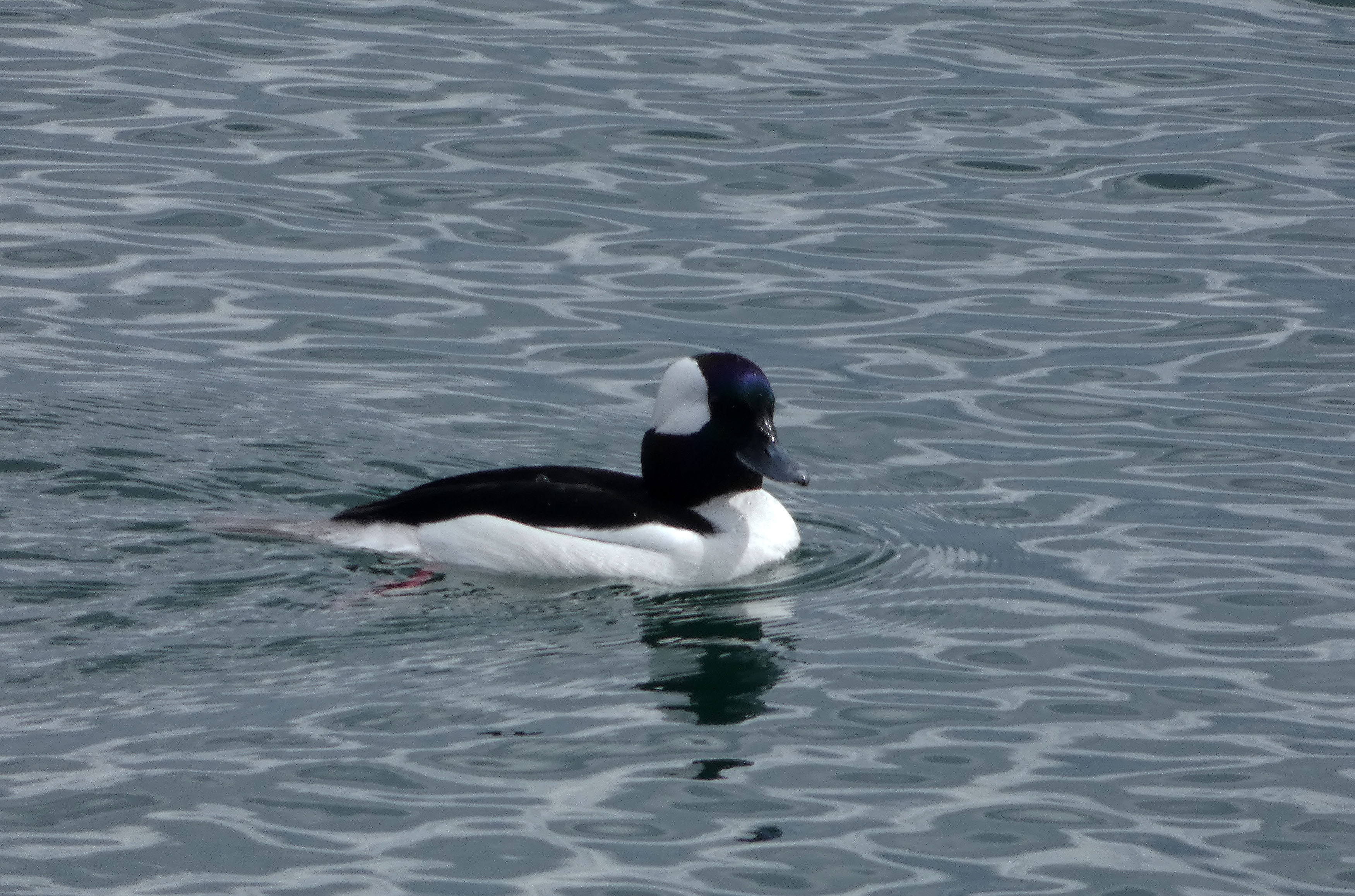
Bufflehead, male. When these foot long ducks appear on the Pond the males are unmistakable. Photo: Bob Mayer
Another water bird is common on the Pond much of the year, but is rarely seen in the winter:
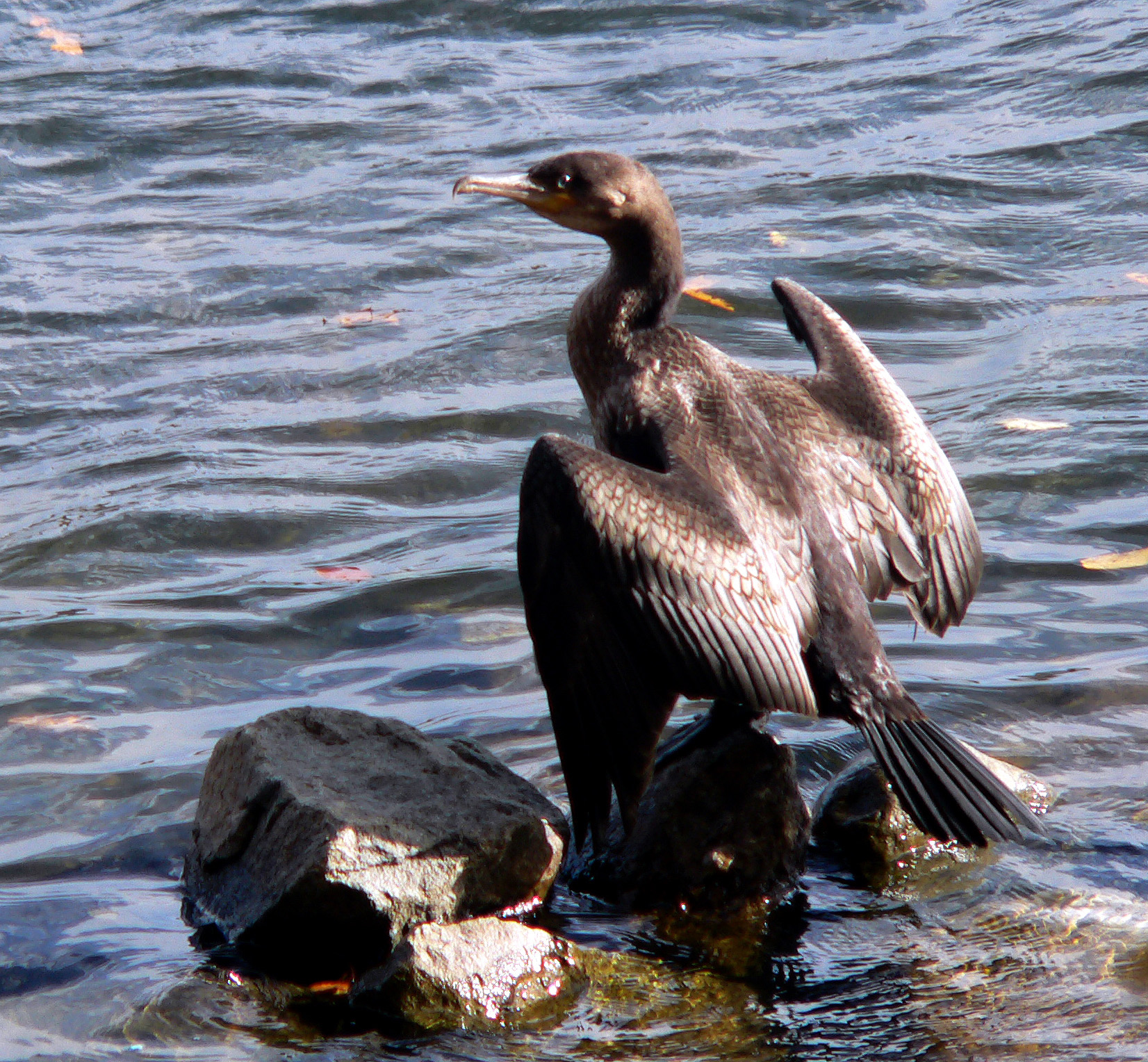
Double-Crested Cormorant. These birds often hold this position, thought to be for drying out their feathers which are less waterproof than most waterfowl. Photo: Bob Mayer
A close-up of this bird seems to hint at the reptilian origin of birds, possibly arising from an ancient bird named Archaeopteryx:

Double-crested Cormorant, immature. Photo: Bob Mayer
In my view, the most beautiful duck on Jamaica Pond is the Wood Duck.

Wood Duck, male. This species is seen more often on other waterways of the Emerald Necklace than on Jamaica Pond. Photo: Bob Mayer
Wood Ducks prefer sheltered water closely surrounded by trees; they appear nearby most frequently along the Riverway. They are cavity nesters and some volunteer stewards of the Emerald Necklace have recently put up nest boxes at Leverett Pond and Ward’s Pond downstream from Jamaica Pond to try to encourage nesting. So far there have been no takers.
Finally I should mention another bird that everyone recognizes when they arrive— Mute Swans. Mute Swans were imported from Europe in the late 1800s as decorative waterfowl on city ponds and estates and so are not native. They have multiplied rapidly in the wild and with a voracious appetite and an aggressive attitude they are now considered an invasive species. They will chase other waterfowl and even people. Here is one getting in your face:
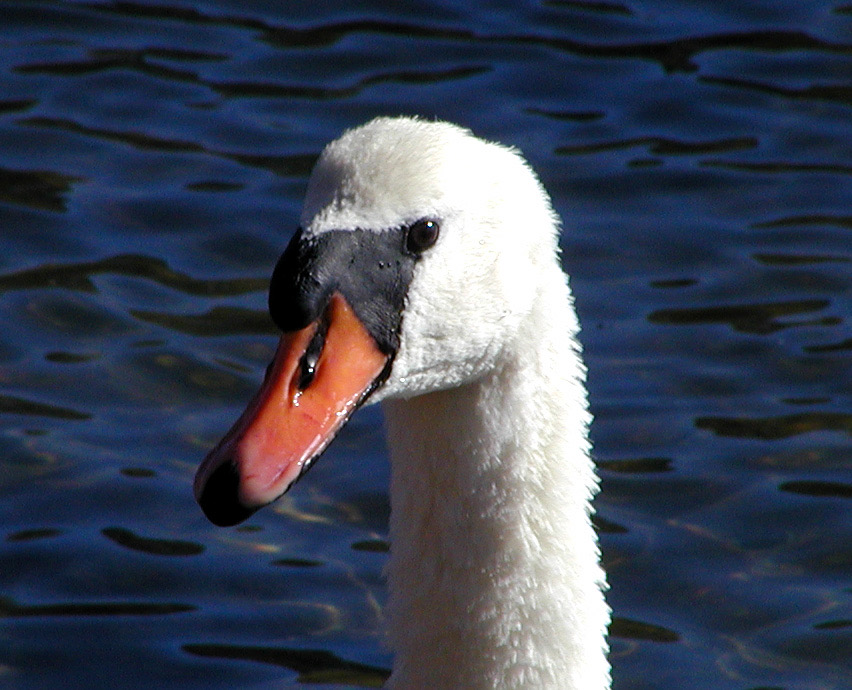
A male Mute Swan staring me down. Photo: Bob Mayer
In the past The Boston Parks Department used to bring a pair of swans to the Pond—as they continue to do at the Public Garden— but most recently the Mute Swans seen here are part of the wild population. This winter there were two birds on the Pond most of the time. In December 2009 at least eleven were recorded. They can be a haunting sight in the fog of a winters day:
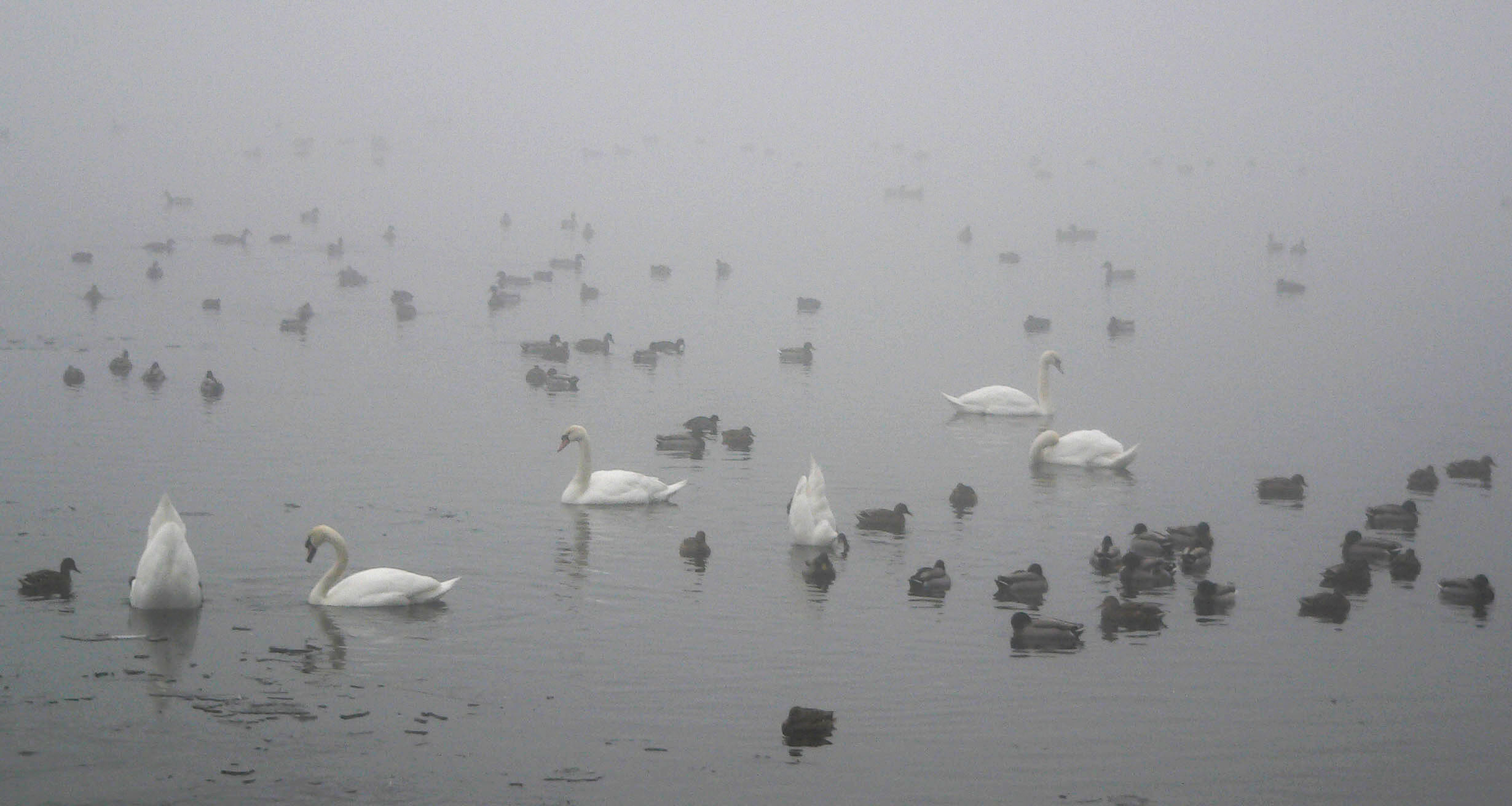
Six of a group of eight Mute Swans on the Pond in January 2011. Photo: Bob Mayer
Debate continues about how to control these agressive waterfowl—the largest birds in Massachusetts—as they spread throughout the country. In the meantime enjoy those few that come to our local waterways, but show them some respect.

